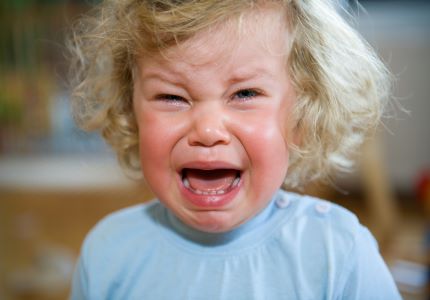Abstract
This article aims at reviewing the close association between autism and seizures. The occurrence of seizures in individuals known to have autism spectrum disorder ASD has been significant enough to warrant a debate about how these two conditions relate to each other. This review tries to analyze how seizures occur and their influence on individuals who have ASD. It also highlights seizures as a comorbid condition in individuals who have autism.
Introduction
Autism is a neurodevelopmental disorder classified as a psychiatric condition. It is characterized by deficits in social interaction and communication and the presence of restricted, repetitive behaviors, interests, or activities. It is commonly seen in children below the age of 18yrs or diagnosed in adults with a history of such symptoms in their early developmental period. When an individual has ASD associated with a medical condition, there should be a specifier to describe the known medical illness. Such medical conditions include epilepsy, constipation, and sleep problems (Diagnostic and statistical manual of mental disorders DSM V, 2013).
A seizure is a clinical expression of abnormal, excessive, synchronous discharges of neurons residing primarily in the cerebral cortex. Usually, it is intermittent and self-limited, lasting seconds to a few minutes. A convulsion is a sudden involuntary contraction of one or more muscles involving the face, trunk, or extremities. Therefore, when one develops a chronic disorder characterized by repeated brain dysfunction due to excessive neuronal discharge, that is termed to be epilepsy/ convulsive disorder. When the seizure is prolonged or immediately recurrent without a return of consciousness, this is status epilepticus. A seizure might be triggered by an electrolyte imbalance (low sodium or calcium levels), temporary cortical disturbance like a head concussion, brain ischemia due to convulsive or toxic drugs, or infections like meningitis or bleeding, e.g., intraparenchymal hemorrhage. The prevalence of ASD is approximately 1% in the general population. About 5 to 46% of these cases show these children also develop seizures. Children who have ASD tend to have a poorer prognosis if there is the presence of seizures. It has been demonstrated that there is a solid close association between autism and seizure development in most autistic individuals.
Literature
Autism is a multifactorial disorder that is believed to occur due to an interplay between genetic and environmental factors. About 15% of ASD cases arise from genetic mutations, and in most cases, the expression is dependent on multiple genes. For example, mutations of the ADNP gene cause a disorder called ADNP syndrome. Proteins produced by this gene affect multiple aspects of brain development, leading to impaired production, growth, and organization of nerve cells. The abnormalities in the brain mainly affect the frontal and temporal lobes of the cortex, which are involved in emotions, social behavior, and language (Medline Plus, 2021). The impairment in nerve cell functioning and nerve myelination leads to the predisposition of the individuals to develop abnormal impulse conduction in the brain, leading to seizures.
Seizures are the most common neurological symptoms in individuals who have autism. A recent study shows that 5 to 46% of people with autism experience seizures. It has also been established that autistic adults who experience seizures have less cognitive ability and weaker daily living skills compared to those that are just autistic only (Peter, 2020). It has also been shown that autistic children who have never experienced a seizure still have abnormal electroencephalogram results (Autism research institute, 2021). It is also clear that children with epilepsy tend to have more autism symptoms like maladaptive behaviors. However, this is attributed to their lower intelligence ability (Emma et al., 2013). There is also a close relationship between specific genetic syndromes with the development of seizures. These syndromes include landau-Kleffner syndrome, Rett syndrome, Angelman, and tuberous sclerosis complex syndromes. The correlation between autism and seizures is undeniably present, but how they influence each other is yet to be determined.
Presentation in children who have Autism and Seizures
Children who tend to have a concurrence of autism and seizure disorder present with;
(A) Persistent deficits in social interaction and social communication, which are manifested with the following features;
- Deficits in social-emotional expression include failure to have regular back-and-forth conversations, reduced sharing of interest, emotions, or affect, and failure to initiate or respond to social interactions.
- Deficits in the use of non-verbal communicative behaviors, for example, poorly integrated verbal and nonverbal expressions, abnormalities in eye contact and body language, total lack of facial expressions, and even deficits in understanding and use of gestures
- Deficits in developing, maintaining, and comprehending relationships; individuals tend to have difficulty adjusting their behavior to suit various social contexts. Also, have an absence of interest in peers or even making friends.
(B) Restricted, repetitive behavior patterns, interests, or activities. Manifested by the presence of features like:
- Repetitive or stereotyped motor movements, use of objects, or speech. For example, echolalia, lining up toys and flipping of hands or objects.
- Individuals tend to be inflexible in adhering to routine or having ritualized verbal or nonverbal behavior patterns like rigid thinking patterns, difficulties with the transition, and certain greeting rituals.
- Having restricted, fixed interests that are abnormal in intensity or focus. For example, being preoccupied with unusual objects, developing a solid attachment to specific things, and exercising circumscribed or perseverative interests.
- Experiencing hypo or hyperactivity to sensory input or having an unusual interest in sensory aspects of the environment. For example, having adverse responses to specific sounds or textures, excessive smelling, and apparent indifference to pain/ temperature.
(C) These children also experience seizures that tend to recur mainly at a younger age. They may present with grand mal seizures, most likely generalized with associated symptoms like nausea, dizziness, loss of consciousness, rapid eye movements, staring spells, and muscle stiffness or jerky body movements. The above features cause clinically significant distress in individuals’ social, occupational, and other functioning areas (DSM V, 2013, p. 57).
Conclusion
There is a close linkage between autism and seizure disorder though not all autistic individuals develop the comorbid illness. Findings in this review show significant clinical implications in patients with autism and seizures, and further research on biological mechanisms of how this association occurs is needed.
References
Diagnostic and statistical manual of mental disorders DSM V, 2013, p. 50-53
Medline Plus. (2021). Autism spectrum disorders. https://medlineplus.gov/genetics/condition/autism-spectrum-disorder/#causes
Peter H. (2020). Autism and seizures may share roots in development. https://www.spectrumnews.org
Autism Research Institute. (2021). Autism and seizures. https://www.autism.org/autism-and-seizures/
Emma W Viscidi, Ashley L Johnson, […], and Elizabeth W Triche. (2013). The association between epilepsy and autism symptoms and maladaptive behaviors in children with Autism Spectrum Disorder. https://www.ncbi.nlm.nih.gov/pmc/articles/PMC4002664/#__ffn_sectitle









